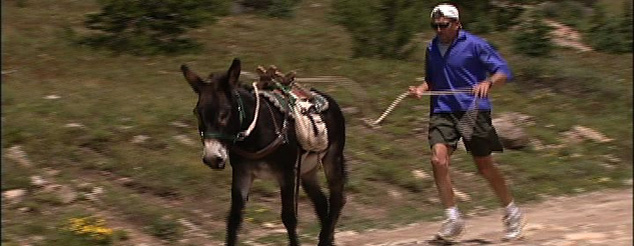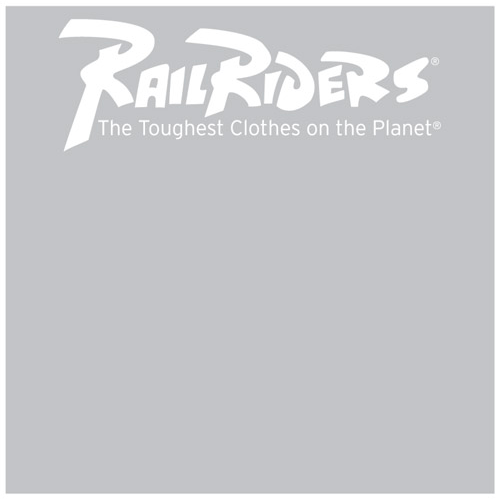
Adventure athlete and ultrarunner Hal Walter, of Westcliffe, Colorado, loves training and racing with Spike, his usually willful and manic-depressive burro. This past summer, these two trail animals won the World Championship Pack-Burro race, held in central Colorado The race covered 29 miles of lung-sapping, mountainous terrain before finishing in the historic mining town of Fairplay. RailRiders talked with Walter after his come-from-behind victory over archrivals, mountain running legend Tom Sobal and Bullwinkle.
Question: Briefly describe the sport of pack-burro racing and its history.
Hal walter: Pack-burro racing is a combination of long-distance running, mountaineering and equine handling skills. It's the only sport I've ever done that is also an art form. Runners are not allowed to ride their burros, but must stay tethered together. Plus, runners must learn to leave their athletic egos up to the whims of a jackass. The sport itself started in 1949 as a race over the fabled 13,187-foot Mosquito Pass between the historic mining towns of Leadville and Fairplay. It's truly a niche sport.
Q: What do you like best about Spike?
HW: That he won two World Championships - one in 1998 and this one in 2000. I'd been in the sport for 18 years and this title had eluded me until Spike won in 1998.
Q: What do you dislike most about Spike?
HW: He isn't exactly an overachiever - he blew a 12-minute lead in the race this year and we barely eked out the win. And he sometimes brays at night and wakes me from a deep sleep. Spike is a very complicated individual with a bipolar personality. Sometimes he's good and sometimes he's bad. There have been times that I considered calling in an Exorcist.
Q: What does Spike do all day?
HW: When he's not training, Spike eats and picks fights with his pasturemates, burros Billy, Clyde and Redbo, and horse Jackie.
Q: How do you train together?
HW: We go out for training runs on the trails and Jeep roads around our home in Colorado's Wet Mountains. Our training runs range from one to five hours. Spike trains three times weekly and I cross-train on the days in between.
Q: What did Spike do after winning the world championship? And you?
HW: He just stood there with this "What's the big deal?" look on his face. I hugged him and kissed him. It was quite a rush of emotions. This race is so hard, and when you win - and we won by only 37 seconds - you really realize what an accomplishment it is. It's beyond description.
Q: What are the hardest or most difficult aspects of this sport?
HW: Running 30 miles of mountainous terain is one thing, but undoubtedly the hardest thing about this sport is making a connection with this animal. You're asking a beast that's not known for its cooperative nature to do something that few animals, humans included, would volunteer to do - run close to 30 miles up and down a 13,000-foot pass. Not many people do this sport and there's a reason - not many can. It's a very exclusive club.
Q: What does your wife think of you spending all this time with Spike?
HW: She is obviously very jealous.
Q: What do you think about the Rampage Pants and other RailRiders products?
HW: Pack-burro racing is definitely not a "neon Lycra" sport, and RailRiders clothing helps me keep the right character profile both on and off the trail. I wear the Endurance Henley both training and racing. The Rampage Pants pack nicely into my saddlebags, and are just the thing when I need extra protection, especially up on the rocky areas on Mosquito Pass. I also wear the Explorer Shirt in white or birch with jeans when cruising Colorado art galleries and coffee houses.
To learn more about pack-burro racing, or order a copy of Hal Walter's entertaining book on the sport, contact outthere@amigo.net.

